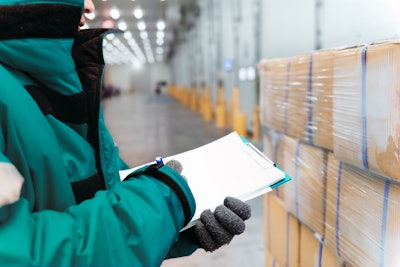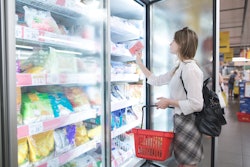
The global smart food logistics market was valued at USD 7.3 billion in 2019, and it is expected to reach USD 14.8 billion by 2025, registering a CAGR of 12.7%, during the period of 2020-2025. The market for smart logistics in the food industry has emerged from benefits of facilitating the 'Ease of procuring' to tracking packages in transit. The ability to receive the items fresh with real-time access to the movement of food is where smart logistics powered by internet of things (IoT) is making a huge difference.
Convergence of logistics and technology, along with cloud-based collaborative solutions that extend through the entire supply chain, has enabled a tight integration of warehouse, transport, and end consumer information, and transparency through the supply chain, this in turn, has been identified as a key driver towards the growth of the market studied.
As the digital economy continues to grow, the IoT technology has transitioned from futuristic idea to tactical tool for logistics companies to implement in their supply chain. Sensors and IoT tools are transforming traditional asset tracking to intelligent supply chains that are capable of earning logistics companies a higher ROI. For the food industry, these IoT-enabled sensors are offering real-time knowledge of asset/fleet location, fleet motion speed, temperature conditions and other crucial data sets.
The sensors additionally help the allied stakeholders to closely monitor food safety data points, thus, ensuring efficient cold chain management. This data enables compliance adherence with local and global regulations. For instance, by using automated Hazard Analysis Critical Control Points (HACCP) checklists during the production, manufacturing, and transporting processes, companies attain access to consistent, meaningful data to implement food safety solutions.
Likewise, varying food laws and regulations across regions, one being the Food and Drug Safety Act has been realized as putting significant pressure on supply chains to record more information and increase transparency.
The COVID-19 pandemic severely disrupted almost all the end-user industries globally, affecting the supply chain management of businesses due to remote working conditions or complete lockdown, resulting in the halt of operations. The disruption proliferated the use of technology and digitalization to its maximum to survive the pandemic and help prevent the disruption of their operations.
The pandemic affected the logistics industry in various ways, as the Logistics Managers' Index (LMI) for April 2020 fell to an all-time low. The LMI is based on eight unique components that involve inventory (levels and costs), warehousing (capacity, utilization, and prices), and transportation (capacity, utilization, and prices).
Key Market Trends
Cold Chain Monitoring to Hold a Significant Share
Rapidly changing food habits, heightened demand for packaged food, and stringent regulations regarding packing and storage have resulted in a power shift from manufacturers to retailers. Processes focusing on zero contamination, precise storage, and high-speed storage and retrieval operations are the key reasons driving automation and the adoption of the technologies in the food and beverage logistics process.
A cold chain monitoring solution helps the food manufacturers efficiently manage the storage, shipment, and distribution of products requiring a temperature-controlled environment. Incomplete cooling chains caused by mechanical breakdowns, traffic delays, and other factors create changing temperatures that can affect perishable foods' spoilage and safety. Also, a lack of real-time visibility of goods locations can contribute to inefficient operational processes.
Hence, the adoption of cold chain monitoring ensures stable temperatures for the transport and storage of goods. Technologies like Bluetooth Low Energy (BLE) beacons with temperature sensors enable tracking goods locations at relevant checkpoints and tracing temperature data continuously and seamlessly, during shipment, or throughout the supply chain.
Multiple food logistics companies are engaging in expansion activities. For instance, in September 2020, third-party food logistics company FreezPak Logistics has announced its plans to build a 140,000 square-foot facility in the United States equipped with an automated storage and retrieval system. The location to be outfitted with 12 robots that can automatically retrieve and store goods.

















